Papers by Antonina Chaban

Zenodo (CERN European Organization for Nuclear Research), Mar 17, 2023
This deliverable has been elaborated within IPERION HS Work Package (WP) 8-Central support activi... more This deliverable has been elaborated within IPERION HS Work Package (WP) 8-Central support activities-that has been designed to mimic the activities of the future European Research Infrastructure for Heritage Science (E-RIHS) European Research Infrastructure Consortium (ERIC). In this WP, two of six tasks were dedicated to training (T8.2 Integrated access to training activities) and T8.3 (Communication). This deliverable examines how are these activities organized by other ERICs and within IPERION HS project. In this mapping exercise, the formal delivery of task 8.5, the information was collected through the analysis of the websites of ERICs, through questionnaires and in person interviews with training/communication officers at ERICs. Practical considerations regarding the communication and training support activities are summarized in view of establishing E-RIHS ERIC.

Wall paintings and mosaics, especially those of archaeological and art historical interest, repre... more Wall paintings and mosaics, especially those of archaeological and art historical interest, represent a complex object of study. They are characterized by the presence of a highly valuable decorated surface and several underlying preparation layers, acting as interface to the structural support. The presence of hidden defects within this structure can be related to the ageing and deterioration of materials, inhomogeneities can be the result of past restoration interventions on the ancient artwork. This thesis project introduces a combined in-situ non-invasive approach to characterize ancient wall decorations and their underlying support in art historical and archaeological field. For this purpose, experimental in-situ and laboratory tests are aimed to evaluate the applicability, potentialities and limitations of the combination of four portable electromagnetic methods: - Multispectral imaging (MI), using a modified camera with visible, infrared and ultraviolet filters (300-1000 nm),...
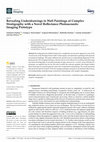
Journal of Imaging, 2021
Revealing precious hidden features by a completely non-invasive approach is one of the crucial is... more Revealing precious hidden features by a completely non-invasive approach is one of the crucial issues in the Heritage Science field. In this regard, concealed fresco paintings still represent an analytical challenge. This paper addresses the specific issue in wall painting diagnostics by the photoacoustic (PA) imaging technique, already proven to be efficient in revealing underdrawings and internal stratigraphy in movable paintings on paper and canvas. A newly set-up reflection PA prototype was applied here for the first time to probe the charcoal, graphite and sinopia hidden sketch drawings in concealed (gypsum, limewash, overpainted) wall paintings. The results presented here push forward the frontiers of the PA imaging technique and point to its potential effectiveness of revealing hidden underdrawings in historical wall paintings with complex stratigraphy.

Microchemical Journal, 2021
Abstract Meccatura is a type of historical gilding technique, which consists in the application o... more Abstract Meccatura is a type of historical gilding technique, which consists in the application of a coloured varnish on burnished metal surfaces (silver or tin foil) with the aim to both imitate the golden surface and to protect the metal from tarnishing. Since the medieval period in Europe, it has been applied in paintings, carved wood altarpieces, frames, polychrome sculptures, and decorated leather. There is a variety of mecca historical recipes, which report on different organic substances, e.g. siccative oils, resins (sandarac, colophony, shellac etc.), organic dyes (saffron, dragon’s blood, gamboge, aloe etc.), plasticizers (beeswax or carnauba), often unknown, subject to degradation phenomena and past interventions. More recently, the classical mecca antica has been substituted with mixtures of synthetic colourants charged with pigments and inert materials, the so called mecca moderna. Due the complexity of present materials, this represents an analytical challenge for heritage scientists and conservators. With more attention dedicated to the traditional gilding techniques, available scientific results on the meccatura are rather fragmentary, being part of a larger multi-analytical study on decorated artworks. This paper focuses on meccatura research issues, outlines the gaps in their scientific study and evaluates several methodologies to overcome them. In specific, the limitations and contributions of complementary Raman and Fourier-Transform Infrared (FTIR) Spectroscopies to the study of main traditional mecca components are analyzed and discussed, supported by structural information from Optical Coherence Tomography (OCT) and colorimetric measurements by Fiber Optics Reflectance Spectroscopy (FORS). The experimental study is carried out on mock-ups and on a real case study. The paper highlights potentials, limitations and future perspectives in the development of non-invasive analytical approach to the investigation of historical and modern mecca varnish recipes, their alteration and ageing.

Journal of Archaeological Science: Reports, 2021
More than 1.1 billion people in developing countries are lacking access to electricity. Based on ... more More than 1.1 billion people in developing countries are lacking access to electricity. Based on the assumption that electricity is a prerequisite for human development, the United Nations has proclaimed the goal of providing electricity to all by 2030. In recent years, Pico-Photovoltaic kits have become a low-cost alternative to investment intensive grid electrification. Using a randomized controlled trial, we examine uptake and impacts of a simple Pico-Photovoltaic kit that barely exceeds the modern energy benchmark defined by the United Nations. We find significant positive effects on household energy expenditures and some indication for effects on health, domestic productivity, and on the environment. Since only parts of these effects are internalized, underinvestment into the technology is likely. In addition, our data show that adoption will be impeded by affordability, suggesting that policy would have to consider more direct promotion strategies such as subsidies or financing schemes to reach the UN goal.
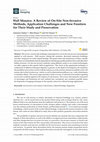
Journal of Imaging, 2020
This review concerns the challenges and perspectives of on-site non-invasive measurements applied... more This review concerns the challenges and perspectives of on-site non-invasive measurements applied to wall mosaics. Wall mosaics, during the centuries, decorated numerous buildings, nowadays being part of world cultural heritage. The preservation and maintenance of these valuable decorations are undoubtedly directly dependent on identifying possible problems that could affect their hidden structure. On-site non-invasive methods, using different contact or no-contact technologies, can offer support in this specific field of application. The choice of the appropriate technique or combination of different techniques depends, in general, on the depth of investigation, the resolution, the possibility to have direct contact with the surfaces or, on the contrary, limited accessibility of the wall mosaics due to their location (e.g., vaults), as well as deterioration problems, (e.g., voids, detachments, or humidity effects). This review paper provides a brief overview of selected recent stud...
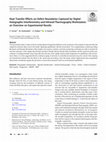
Experimental Techniques, 2019
The heat transfer effect is observed from existing defects through heat diffusion to the sound ar... more The heat transfer effect is observed from existing defects through heat diffusion to the sound area of the sample in long term after the sample has reached values close to the initial, signifying equilibrium with the environment. Two complementary systems providing the kinetic and thermal information of the samples were used to construct a real-time monitoring workstation in order to monitor the real-time responses of the sample after thermal excitation. Results indicate that the defect boundaries and the sound non-defect area continue to exchange thermal values long after the total area of the sample reaches initial temperature in equilibrium with environment. Hence, it is here suggested that the continuous aging of artworks in controlled environments may be a result of the ongoing low thermal heat transfer from the defect to the sound areas provoking a slow but steady surface displacement and consequently deterioration mechanism against the preventive conservation measures based on environmental equilibrium.

Journal of Imaging, 2019
This paper presents first laboratory results of a combined approach carried out by the use of thr... more This paper presents first laboratory results of a combined approach carried out by the use of three different portable non-invasive electromagnetic methods: Digital holographic speckle pattern interferometry (DHSPI), stimulated infrared thermography (SIRT) and holographic subsurface radar (HSR), proposed for the analysis of a custom-built wall mosaic model. The model reproduces a series of defects (e.g., cracks, voids, detachments), simulating common deteriorated, restored or reshuffled areas in wall mosaics. DHSPI and SIRT, already well known in the field of non-destructive (NDT) methods, are full-field contactless techniques, providing complementary information on the subsurface hidden discontinuities. The use of DHSPI, based on optical imaging and interferometry, provides remote control and visualization of surface micro-deformation after induced thermal stress, while the use of SIRT allows visualization of thermal energy diffusion in the surface upon the induced thermal stress. ...

Journal of Cultural Heritage, 2019
Multispectral imaging is used to identify and semi-quantify the distribution of pigments in wall ... more Multispectral imaging is used to identify and semi-quantify the distribution of pigments in wall paintings based on mineral-specific band ratios. The western wall in the frigidarium of the Sarno baths in Pompeii was imaged using VIS-IR band-pass filters, stacked as multispectral data, and different pigments were measured using portable X-ray fluorescence (pXRF) and fiber optic reflected spectroscopy (FORS) to determine their chemical composition and spectral signature. Cuprorivaite and hematite were found to be the main minerals in blue and red pigments, with higher amounts of copper and iron respectively. Proportional relations were found between cuprorivaite specific band ratios from multispectral and FORS data and the intensity of copper in pXRF spectra, allowing to map the mineral content on a large scale and determine their relative concentrations. These results were confirmed by X-ray powder diffraction (XRD) and thin section analysis on painted fragments that were detached from the wall paintings and found below. This contribute indicates that on-site portable instrumentation could identify specific pigments and determine their 2D distributions based on non-invasive diagnostics of chemical composition and spectral reflectance in wall paintings.
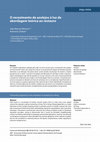
Conservar Património, 2016
LNEC found, as a by-product of another research project, that in at least some cases, glazed cera... more LNEC found, as a by-product of another research project, that in at least some cases, glazed ceramic tiles (azulejos) could be restored by re-firing. The re-firing of façade glazed tiles as a viable alternative to their outright dumping should, in principle, present no doubts. However the mere idea of restoring in the kiln brings forth methodologic arguments unparalleled in other restoration techniques. The present communication discusses the re-firing of azulejos based on theoretical restoration principles, aiming to demonstrate that it cannot be discarded straightforwardly without considering individually its advantages and possible applications. However, and although no damaging consequences where identified, the eventual application of this method to azulejos that are not considered as industrial products still requires complementary studies regarding its long-term dangerousness.

Semi-industrial glazed ceramic tiles lining urban façades represent a rich heritage asset of Port... more Semi-industrial glazed ceramic tiles lining urban façades represent a rich heritage asset of Portuguese cities and in particular of Lisbon. However, still a sizeable part of them is being continuously lost. Whenever the façade tiles are decayed, they are usually merely removed and replaced by newly manufactured ones. In this communication we introduce re-firing as an alternative to simple disposal of damaged original tiles. We assess the technique as a technological option for the restoration of crazed and spalled tiles. The re-firings are applied at different heatworks and temperatures and the effects of all tests are studied by visual, macroscopic observation and through the glaze resistance to a pull-off. The effect of continuous serviceability of the re-fired tiles is assessed through accelerated ageing tests. The domain of application of the technique and the shortcomings detected are presented and discussed in this communication. Dwelling on a new ground, we present the initia...

Applied Sciences, 2021
Fluorescence analysis of materials used as binders and coatings in artworks is often hampered by ... more Fluorescence analysis of materials used as binders and coatings in artworks is often hampered by numerous factors, leading to uncertainties in data interpretation. Fluorescence lifetime (FL) measurements enable improvement of the specificity with respect to steady-state measurements by resolving the decay dynamics of the fluorophore emissions. In this work, layers of natural resin, oil, and wax—in pure form, pigmented, in mixtures, and spread on different substrates—were analyzed using a compact, portable, fiber-based FL instrument. FL data were processed via the phasor method and integrated with Raman spectroscopy to obtain complementary chemical information on the different substances. It was observed that the τ-phase of the mixtures is affected by both the pigments and the dispersing medium, and that the presence of the metal substrate contributes to changes in the FL of mixtures. The results obtained with our portable FL system combined with Raman spectroscopy pave the way for a...

Ancient wall mosaic decorations can be exposed to uncontrolled environmental conditions. The main... more Ancient wall mosaic decorations can be exposed to uncontrolled environmental conditions. The main mosaic conservation problems, induced by external factors, are related to temperature and humidity variations, which may result in moisture, salt crystallization and accelerated material deterioration within the underlying layers. Though such deterioration in the subsurface is not immediately visible, it can strongly affect the preservation of the entire structure and the decoration layer in the short or long-term future. In this paper, we present and discuss laboratory experimental results of Digital Holographic Speckle Pattern Interferometry (DHSPI), applied to the subsurface diagnostic of a mosaic model after artificially induced thermal change and under simulated environmental conditions in climate chamber. The tests were performed on a custom-built wall mosaic model with known construction and known defects, which are simulating voids, detachments and deteriorated, restored or resh...

Applied Science, 2022
Fluorescence analysis of materials used as binders and coatings in artworks is often hampered by ... more Fluorescence analysis of materials used as binders and coatings in artworks is often hampered by numerous factors, leading to uncertainties in data interpretation. Fluorescence lifetime (FL) measurements enable improvement of the specificity with respect to steady-state measurements by resolving the decay dynamics of the fluorophore emissions. In this work, layers of natural resin, oil, and wax—in pure form, pigmented, in mixtures, and spread on different substrates—were analyzed using a compact, portable, fiber-based FL instrument. FL data were processed via the phasor method and integrated with Raman spectroscopy to obtain complementary chemical information on the different substances. It was observed that the τ-phase of the mixtures is affected by both the pigments and the dispersing medium, and that the presence of the metal substrate contributes to changes in the FL of mixtures. The results obtained with our portable FL system combined with Raman spectroscopy pave the way for a systematic study of a larger number of materials for future in situ applications on works of art.
Journal of Imaging, 2021
Revealing precious hidden features by a completely non-invasive approach is one of the
crucial is... more Revealing precious hidden features by a completely non-invasive approach is one of the
crucial issues in the Heritage Science field. In this regard, concealed fresco paintings still represent
an analytical challenge. This paper addresses the specific issue in wall painting diagnostics by the
photoacoustic (PA) imaging technique, already proven to be efficient in revealing underdrawings
and internal stratigraphy in movable paintings on paper and canvas. A newly set-up reflection PA
prototype was applied here for the first time to probe the charcoal, graphite and sinopia hidden
sketch drawings in concealed (gypsum, limewash, overpainted) wall paintings. The results presented
here push forward the frontiers of the PA imaging technique and point to its potential effectiveness
of revealing hidden underdrawings in historical wall paintings with complex stratigraphy.
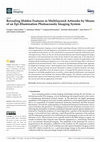
Journal of Imaging
Photoacoustic imaging is a novel, rapidly expanding technique, which has recently found several a... more Photoacoustic imaging is a novel, rapidly expanding technique, which has recently found several applications in artwork diagnostics, including the uncovering of hidden layers in paintings and multilayered documents, as well as the thickness measurement of optically turbid paint layers with high accuracy. However, thus far, all the presented photoacoustic-based imaging technologies dedicated to such measurements have been strictly limited to thin objects due to the detection of signals in transmission geometry. Unavoidably, this issue restricts seriously the applicability of the imaging method, hindering investigations over a wide range of cultural heritage objects with diverse geometrical and structural features. Here, we present an epi-illumination photoacoustic apparatus for diagnosis in heritage science, which integrates laser excitation and respective signal detection on one side, aiming to provide universal information in objects of arbitrary thickness and shape. To evaluate th...


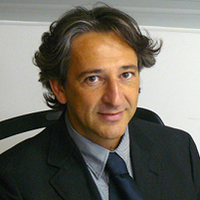

Uploads
Papers by Antonina Chaban
crucial issues in the Heritage Science field. In this regard, concealed fresco paintings still represent
an analytical challenge. This paper addresses the specific issue in wall painting diagnostics by the
photoacoustic (PA) imaging technique, already proven to be efficient in revealing underdrawings
and internal stratigraphy in movable paintings on paper and canvas. A newly set-up reflection PA
prototype was applied here for the first time to probe the charcoal, graphite and sinopia hidden
sketch drawings in concealed (gypsum, limewash, overpainted) wall paintings. The results presented
here push forward the frontiers of the PA imaging technique and point to its potential effectiveness
of revealing hidden underdrawings in historical wall paintings with complex stratigraphy.
crucial issues in the Heritage Science field. In this regard, concealed fresco paintings still represent
an analytical challenge. This paper addresses the specific issue in wall painting diagnostics by the
photoacoustic (PA) imaging technique, already proven to be efficient in revealing underdrawings
and internal stratigraphy in movable paintings on paper and canvas. A newly set-up reflection PA
prototype was applied here for the first time to probe the charcoal, graphite and sinopia hidden
sketch drawings in concealed (gypsum, limewash, overpainted) wall paintings. The results presented
here push forward the frontiers of the PA imaging technique and point to its potential effectiveness
of revealing hidden underdrawings in historical wall paintings with complex stratigraphy.